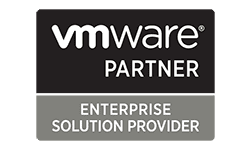Top 10 Tips for Back-to-School IT Preparation
Back-to-School IT Preparation for a Successful School Year
Kelsey Young, Copywriter and Media Specialist
5 Min Read

As the anticipation of a new academic year brings with it a mix of excitement and challenges for educational institutions, we have compiled the Top 10 Tips for Back-to-School IT Preparation. With students and staff returning to their routines, the role of technology in education has never been more critical. The success of the school year increasingly hinges on the reliability and efficiency of IT infrastructure, which supports everything from digital learning platforms to secure data storage. In this rapidly evolving digital landscape, ensuring that your school’s IT systems are prepared to meet the demands of modern education is not just a priority—it’s a necessity.
The integration of technology into the classroom environment has transformed the way students learn, and teachers educate. From interactive online lessons to virtual collaborations, digital tools have become the backbone of contemporary education. However, with this reliance on technology comes the need for robust IT support and proactive management to prevent disruptions. Schools must be vigilant in maintaining their IT infrastructure, updating systems, and implementing best practices to protect against cyber threats. The goal is to create a seamless digital experience that enhances learning without technical setbacks.
At GDC IT Solutions, we recognize the vital importance of a well-maintained IT environment in education. Our team is dedicated to helping schools navigate the complexities of technology management, ensuring that both students and staff have the tools they need for a successful academic year. To support your efforts, we’ve compiled the “Top 10 Tips for Back-to-School IT Preparation” that will help your institution prepare for a smooth and productive start to the school year. These tips are designed to address key areas of IT management, from updating devices and software to strengthening cybersecurity measures, so your school can focus on what truly matters—educating the next generation.

Update All Devices and Software
The first step in preparing for the school year is to ensure that all devices and software are up-to-date. This includes laptops, tablets, and any other educational tools that students and staff will be using. Updating to the latest versions of operating systems and educational applications not only provides access to the newest features but also enhances security by fixing vulnerabilities that could be exploited by cyber threats. Regular updates prevent compatibility issues and ensure that all educational platforms run smoothly.

Strengthen Cybersecurity Measures
With the increasing reliance on digital tools and platforms, cybersecurity has never been more critical. Schools are often targets for cyberattacks, which can result in data breaches or disruptions to learning. Implementing strong passwords and enabling multi-factor authentication (MFA) are essential steps in protecting school networks and data. Additionally, it’s crucial to educate students and staff about the dangers of phishing attempts and other common cybersecurity threats. Regular training and awareness programs can go a long way in creating a culture of cybersecurity within the school.

Backup Important Data
Data loss can be a significant setback, especially during the school year when students and staff rely on digital resources for learning and teaching. To avoid this, it’s essential to regularly back up all important data. This includes assignments, notes, lesson plans, and other educational materials. Cloud storage solutions offer a convenient way to store backups, allowing easy access to data from anywhere. For added security, consider also using external hard drives or network-attached storage (NAS) devices for backups.

Optimize Internet Connectivity
A reliable and fast internet connection is vital for modern education, especially with the increased use of online classes and digital resources. Schools should ensure that their internet connectivity is robust enough to support the demands of the entire student body and staff. This might involve upgrading the network infrastructure, adding additional access points, or implementing bandwidth management techniques to prioritize educational traffic. Reliable internet connectivity helps prevent disruptions during online learning sessions and allows students to access resources seamlessly.

Check and Upgrade Hardware
Outdated or malfunctioning hardware can significantly hinder the learning process. Before the school year begins, it’s essential to evaluate the condition of all school-issued devices, such as laptops, tablets, and desktops. If any devices are outdated or no longer functioning efficiently, consider upgrading or replacing them. Investing in reliable hardware reduces downtime and ensures that students and staff can focus on learning without technical interruptions.

Utilize Digital Learning & Collaboration Platforms
Digital learning platforms have become integral to modern education, providing a space for students and teachers to interact, share resources, and manage assignments. Schools should ensure that both students and teachers are familiar with the digital learning platforms they will be using, such as Google Classroom, Microsoft Teams, or Zoom. Offering training sessions at the start of the school year can help everyone get up to speed and make the most of these tools. Well-implemented digital learning platforms can enhance collaboration and streamline the educational process.

Organize Digital Files
An organized digital workspace is key to efficiency. Encouraging students and staff to systematically organize their digital files using folders and labels can save time and reduce frustration when searching for specific materials. Proper organization also helps keep digital workspaces clutter-free, allowing for a more focused and productive learning environment. Schools can provide guidelines and best practices for digital file management to help everyone stay organized throughout the school year.

Implement Parental Controls
For younger students, it’s important to have parental controls in place on devices to ensure a safe and appropriate online experience. Parental controls can restrict access to inappropriate content, limit screen time, and monitor online activity. By implementing these controls, schools can help parents manage their children’s digital usage and provide a safer online environment for learning. It’s also beneficial to educate parents about the importance of these controls and how to set them up effectively.

Plan for Remote Learning
The past few years have shown the importance of being prepared for remote learning. Schools should have a plan in place for remote learning in case of unexpected closures or other situations that require students to learn from home. This includes ensuring all students have access to devices and the internet at home and establishing clear communication channels for online instruction. By planning ahead, schools can minimize disruptions and ensure that learning continues uninterrupted, no matter the circumstances.

Encourage Digital Well-Being
As students and staff spend more time on screens, it’s important to promote healthy digital habits. Encouraging regular breaks from screens, maintaining good posture while using devices, and balancing online and offline activities can help prevent issues such as eye strain and digital burnout. Schools can incorporate digital well-being into their IT policies and offer resources or workshops on maintaining a healthy relationship with technology. By prioritizing digital well-being, schools can create a more balanced and sustainable learning environment.
As you prepare for the upcoming school year, implementing these tips for back-to-school IT preparation can make a significant difference in the overall experience for students and staff. At GDC IT Solutions, we’re committed to supporting educational institutions with the tools and expertise they need to succeed. By staying proactive and addressing these key areas, schools can ensure a smooth transition back to the classroom and create a secure, efficient, and supportive digital environment for learning.
For more information on how GDC IT Solutions can assist your school in preparing for the new academic year, contact us today. We’re here to help you make this school year the best one yet.




